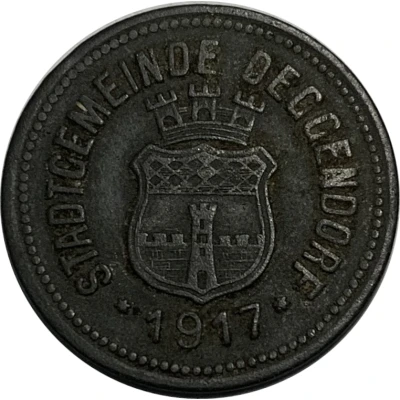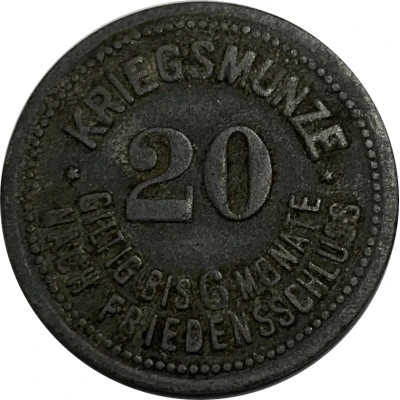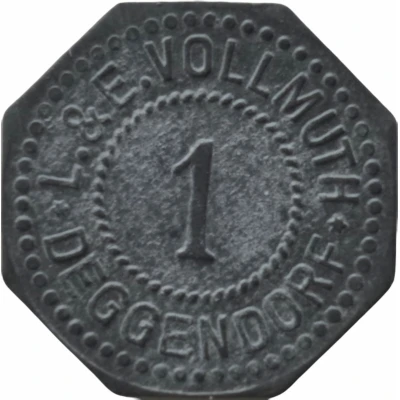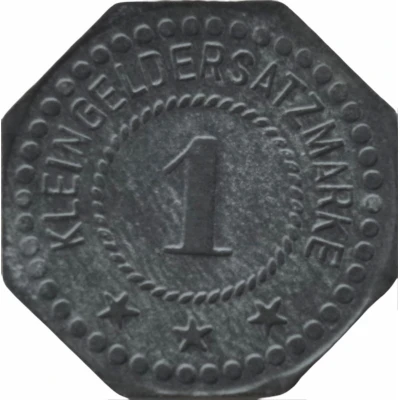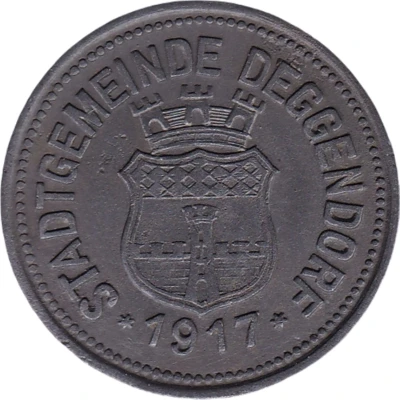
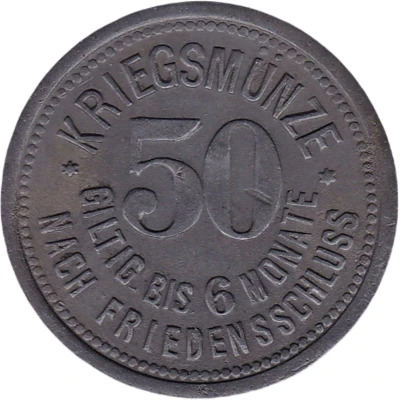

© gyoschak (CC BY-NC-SA)
50 Pfennigs - Deggendorf
1917 year| Zinc | 3.03 g | 23.9 mm |
| Issuer | City of Deggendorf (Federal state of Bavaria) |
|---|---|
| Emperor | William II (Wilhelm II) (1888-1918) |
| Type | Standard circulation coin |
| Year | 1917 |
| Value | 50 Pfennigs (50 Pfennige) (0.50) |
| Currency | Mark (1914-1924) |
| Composition | Zinc |
| Weight | 3.03 g |
| Diameter | 23.9 mm |
| Thickness | 1.19 mm |
| Shape | Round |
| Technique | Milled |
| Orientation | Medal alignment ↑↑ |
| Demonetized | Yes |
| Updated | 2024-10-04 |
| Numista | N#63861 |
|---|---|
| Rarity index | 80% |
Reverse
Pearl rim, multi-line legend surrounding denomination
Script: Latin
Lettering:
KRIEGSMÜNZE
50
GILTIG BIS 6 MONATE
NACH FRIEDENSSCHLUSS
Edge
Plain
Comment
Issuing authority: [Stadt, Bayern]Interesting fact
The 50 Pfennigs - Deggendorf 1917 coin from the City of Deggendorf in Bavaria, Germany, is interesting because it was made of zinc, a material that was commonly used for coin production during World War I due to its low cost and durability. This coin, in particular, weighs 3.03 grams, which is relatively light compared to other coins of similar denominations. This fact highlights the resourcefulness and adaptability of the German government during a time of war, when traditional materials may have been scarce or expensive.
